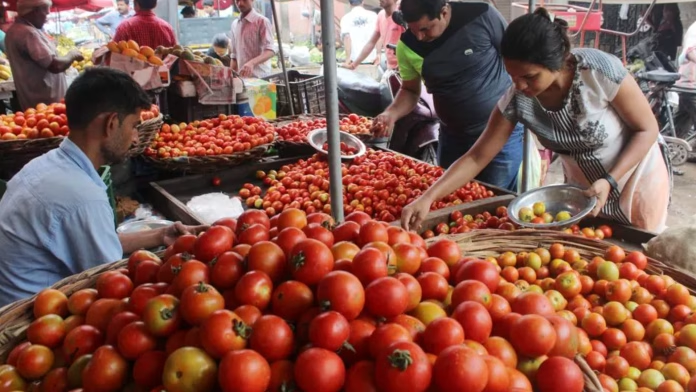In the midst of a significant surge in tomato prices nationwide, the Central government has issued directives to its agencies, namely NAFED and NCCF, to promptly acquire the essential vegetable from mandis located in crucial tomato-producing states such as Andhra Pradesh, Karnataka, and Maharashtra.
The increase in tomato prices has been observed nationwide, affecting various regions and geographies rather than being confined to a specific area. In major cities, the prices have surged to a significant extent, reaching as high as INR 150-160 per kilogram.
After acquisition, these items will be promptly sent for simultaneous delivery to key consumption hubs, where retail prices have experienced the highest surge in the last month.
Typically, the months of July-August and October-November are considered low production periods for tomatoes.
The stocks of tomato will be distributed through retail outlets at “discounted prices” to the consumers in Delhi-NCR region by Friday, this week, said a food ministry release Wednesday.
“The targeted centres for release (of tomato) have been identified on the basis of absolute increase in retail prices over the past one month in centres where prevailing prices are above the All-India average.”
Tomatoes are cultivated across the majority of states in India, albeit in varying quantities. The highest production is observed in the southern and western regions of the country, which together account for approximately 56-58% of the total tomato production in India.
“Southern and Western regions being surplus states, feed to other markets depending on production seasons. The production seasons are also different across regions. The peak harvesting season occurs from December to February.”
“The cycle of planting and harvesting seasons and variation across regions are primarily responsible for price seasonality in Tomato. Apart from the normal price seasonality, temporary supply chain disruptions and crop damage due to adverse weather conditions etc. often lead to sudden spikes in prices.”
The government stated that the increase in prices was primarily due to the monsoon season, which exacerbated existing challenges in distribution and led to higher transit losses. It was emphasized that tomatoes have a comparatively shorter shelf life, contributing to the difficulties faced in maintaining their availability and affordability.
At present, the majority of supplies reaching markets in Gujarat, Madhya Pradesh, and several other states primarily originate from Maharashtra, particularly Satara, Narayangaon, and Nashik. This supply chain is anticipated to continue until the end of this month.
In addition to Maharashtra, Madanapalle in Chittoor, Andhra Pradesh, has also been experiencing consistent arrivals of supplies in significant quantities. As for Delhi-NCR, the majority of arrivals are sourced from Himachal Pradesh, while a smaller quantity comes from Kolar in Karnataka.
New crop arrivals are expected soon from Nashik district. Furthermore, in August, additional supply is expected to come from Narayangaon and Aurangabad belt. Madhya Pradesh arrivals are also expected to start.
“Prices are anticipated to cool down in the near future, accordingly,” the food ministry asserted.
Based on the Price Monitoring Division’s database maintained by the Department of Consumer Affairs, there has been a significant increase in tomato prices this month compared to early June in retail markets. On average, the price per kilogram of tomatoes has risen by INR 60-100. The data reveals that in Delhi, prices have surged from INR 20 per kg in early June to INR 110 last week. Similarly, in Chennai, Ahmedabad, and Kolkata, which are three prominent consumption regions, tomato prices have escalated to INR 117, INR 100, and INR 148 respectively.
The data indicated that the prices of tomatoes, a staple vegetable, were in line with the significant increase observed in wholesale markets during the month of June.
As tomato prices continue to soar, analysts anticipate that the retail inflation data for June, which is scheduled to be released later today, may reflect an upward trend.
India’s retail inflation witnessed a decline in May, reaching a two-year low of 4.25 percent. This is a significant decrease from the inflation rates of 4.7 percent in April and 5.7 percent in March. The substantial reduction in inflation numbers can be attributed to the Reserve Bank of India’s consistent monetary policy tightening since mid-2022.
For three consecutive quarters, India’s retail inflation remained above the Reserve Bank of India’s target of 6 percent. It eventually eased back to the RBI’s comfort zone in November 2022.





